What to do in Sapa for 3, 4, or 5 Days
Sapa, nestled in the northwestern mountains of Vietnam, is a must-visit destination for anyone exploring the country. With its breathtaking terraced rice fields, misty peaks, and vibrant ethnic minority cultures, Sapa offers both an adventurous and cultural experience. While some people might want to visit Sapa in a single day, this spectacular region deserves more time to truly appreciate its beauty and charm.
If you're wondering what to do in Sapa for 3, 4, or 5 days, this guide will help you plan the perfect itinerary. Whether you’re seeking thrilling treks, encounters with local communities, or simply stunning landscapes, we’ll outline the best experiences based on your travel duration.
About Sapa
Sapa is one of the most stunning destinations in northern Vietnam, offering breathtaking landscapes, rich cultural experiences, and exciting outdoor adventures. Nestled in the Hoang Lien Son mountain range, this highland town is famous for its terraced rice fields, mist-covered peaks, and traditional ethnic villages. The region is home to several ethnic minority groups, including the H’Mong, Red Dao, and Giay people, each with their own unique customs, clothing, and crafts.
Sapa is a paradise for trekking enthusiasts. Trails lead through picturesque valleys, bamboo forests, and traditional villages, where you can meet friendly locals and learn about their way of life. Whether you choose a short walk or a multi-day trek, the landscapes are always rewarding. If you prefer a less strenuous experience, the Fansipan cable car offers breathtaking views of Indochina’s highest peak, while the town itself has charming markets, historic sites, and cozy cafes where you can enjoy the cool mountain air.
What to do in Sapa for 3, 4, or 5 Days?
Sapa Itinerary 3 days
Day 1: Hanoi - Sapa
Your adventure begins early in the morning as you leave Hanoi for Sapa. The journey takes around six hours if you travel by bus, or you can take an overnight train to Lao Cai and continue by shuttle. Either way, the drive offers breathtaking views of mountains, rivers, and rice fields. Once you arrive in Sapa, the cool mountain air and misty peaks welcome you. Start by visiting Silver Waterfall and Love Waterfall, two stunning waterfalls located just outside Sapa. Enjoy the fresh air, take photos, and soak in the beauty of nature before heading back to town.
After checking in and having lunch, take time to explore the town. Sapa’s main square is always lively with ethnic minority women in traditional clothing selling handicrafts. Visit the Sapa Stone Church, a beautiful French colonial structure that stands as a symbol of the town. If you enjoy markets, drop by the Sapa Market, where you can find local textiles, handmade souvenirs, and fresh produce.
In the evening, have dinner at a local restaurant and try Sapa’s famous salmon hotpot, a perfect dish for the chilly weather.
Day 2: Sapa - Lao Chai - Ta Van - Giang Ta Chai - Sapa
Today is all about experiencing the beauty of Sapa’s countryside. After breakfast, set off on a trekking journey to some of the most scenic villages in the Muong Hoa Valley. The first stop is Lao Chai, a Black H’Mong village known for its stunning terraced rice fields. As you walk through the village, you will see local families weaving, embroidering, and farming. Your guide will likely share stories about the customs and traditions of the H’Mong people.
From Lao Chai, continue trekking to Ta Van, a village home to the Giay ethnic group. The path takes you through rice paddies and bamboo forests, with chances to interact with friendly locals. Some travelers choose to stay in a homestay here for a more immersive experience, but if you are on a short trip, you will have lunch and then move on to Giang Ta Chai.
Giang Ta Chai is a Red Dao village surrounded by waterfalls and lush greenery. The villagers wear distinctive red headscarves and are known for their herbal baths. If you have time, you can take a quick dip in the cool waters of the nearby waterfall. After a long day of trekking, head back to Sapa for a well-earned rest. Enjoy another delicious local meal before relaxing in your hotel.
Day 3: Sapa - Bac Ha Market - Hanoi
On your last day, wake up early and travel to Bac Ha Market if it’s a Sunday. If it’s not a Sunday, you can visit Coc Ly Market on Tuesday or Can Cau Market on Saturday, both of which offer a similar cultural experience with fewer tourists. Alternatively, you can spend the morning exploring more of Sapa at a relaxed pace.
Bac Ha market is the most colorful and vibrant in northern Vietnam, attracting ethnic minorities from the surrounding mountains. You will see Flower H’Mong women in beautifully embroidered outfits, selling everything from livestock and vegetables to handmade crafts. The market is a great place to try local food, such as thắng cố (a traditional horse meat stew) and sticky rice.
After exploring the market, take some time to visit Ban Pho Village, located nearby. This village is known for producing corn wine, a strong but flavorful local specialty. If you’re curious, you can visit a local house to see how the wine is made and even taste a small sample.
In the afternoon, begin the journey back to Hanoi. You will arrive in the evening, tired but full of unforgettable memories of Sapa’s landscapes, culture, and people.
Sapa Itinerary 4 days
Day 1: Hanoi - Sapa
Follow the same itinerary as the three-day trip: travel from Hanoi to Sapa, explore the town, visit the Sapa Stone Church, browse the market, etc. Enjoy a warm bowl of salmon hotpot for dinner before getting some rest for the adventure ahead.
Day 2: Sapa - Cat Cat - Y Linh Ho - Ta Van - Sapa
Start your day with a visit to Cat Cat Village, just a short trek from Sapa town. This H’Mong village is famous for its traditional crafts, scenic waterfall, and wooden waterwheels. As you walk through, you’ll see local artisans making jewelry, weaving cloth, and performing traditional music.
From Cat Cat, continue trekking to Y Linh Ho, a lesser-known Black Hmong village with spectacular rice terraces and peaceful trails. It’s a great place to take in the scenery and enjoy the quiet countryside. Afterward, make your way to Ta Van, a charming Giay village where you can have lunch and interact with the locals, who are very welcoming.
By late afternoon, return to Sapa and spend the evening at leisure. If you still have energy, you can enjoy a herbal foot bath at a local spa or sip a warm drink at a mountain-view café.
Day 3: Sapa - Fansipan - Ham Rong Mountain
Dedicate this day to exploring Sapa’s most iconic mountain landscapes. In the morning, take the Fansipan cable car to the “Roof of Indochina.” The ride offers spectacular views of deep valleys and misty peaks. At the summit, walk up the final steps to the highest point in Vietnam and take in the breathtaking scenery.
After descending, have lunch at a local restaurant for some traditional dishes, fueling up for the rest of the day. Your next visit is Ham Rong Mountain, which is right behind the town center. The climb is not too challenging, and the reward at the top is a panoramic view of Sapa and the Hoang Lien Son mountain range. The flower gardens and orchid greenhouse along the way make the walk even more enjoyable. Head back to town in the evening, have dinner and try more of Sapa’s specialties.
Day 4: Sapa - Bac Ha weekly market - Hanoi
On your last day, wake up early and visit Bac Ha Market if it’s Sunday. If it’s not a Sunday, you can visit other weekly markets, offering a similar cultural experience with fewer tourists. Alternatively, you can spend the morning exploring more of Sapa at a relaxed pace. If not visiting a market, spend the exploring O Quy Ho Pass, one of Vietnam’s highest mountain passes, offering stunning views. Another highlight is the Muong Hoa Funicular, which takes you through verdant valleys with breathtaking views above the clouds.
After lunch, begin your journey back to Hanoi.
Sapa Itinerary 5 days
Day 1: Hanoi - Sapa
Instead of just exploring Sapa town, start your trip with a visit to Love Waterfall and Silver Waterfall, two beautiful waterfalls located a short drive from the town. Love Waterfall is set in a lush green forest, while Silver Waterfall cascades down from a height of over 200 meters. The fresh air and stunning scenery make these spots perfect for an introduction to Sapa’s natural beauty. Afterward, visit O Quy Ho Pass, one of the highest and most spectacular mountain passes in Vietnam, offering breathtaking views of the Hoang Lien Son range. Return to town in the evening for a warm meal and a good night’s rest.
Day 2: Sapa - Ban Khoang - Ta Giang Phinh
Travel to Ban Khoang, a lesser-visited village where the Red Dao people live in harmony with nature. The landscapes here are dramatic, with rolling hills, rice terraces, and mist-covered valleys. Walk through the village, learn about the locals’ way of life, and then continue to Ta Giang Phinh, a peaceful H’Mong village surrounded by breathtaking mountain views. The trek here is off-the-beaten-path, making it ideal if you want to escape the crowds. Head back to Sapa in the late afternoon and enjoy a quiet evening.
Day 3: Sapa - Ma Tra - Ta Phin
Trek to Ma Tra, a hidden gem with quiet rice terraces and traditional H’Mong houses. From Ma Tra, continue to Ta Phin, a Red Dao village known for its herbal baths. The villagers here are friendly and often invite visitors to try their herbal treatments, which are said to have therapeutic benefits. After an immersive day in the countryside, return to Sapa for some well-deserved rest.
Day 4: Sapa - Fansipan - Bac Ha
Take the cable car to Fansipan, the highest peak in Indochina, and enjoy breathtaking views of the surrounding mountains. After descending, travel to Bac Ha, where you can explore the town, visit the HMong King’s Palace, and enjoy the peaceful countryside.
Day 5: Bac Ha - Hanoi
If it’s a Sunday, visit Bac Ha Market before returning to Hanoi. If not, spend the morning at a relaxed pace, visiting a local village or enjoying a quiet café with a view. In the afternoon, start your journey back to Hanoi, ending your Sapa adventure with unforgettable memories.
How many days should I spend in Sapa?
Choosing how many days to spend in Sapa depends on your interests and travel style. If you only have three days, you can still experience the highlights, including a trek through the rice fields, a visit to ethnic villages, and a trip to a local market. This option is ideal for those with a tight schedule who still want a taste of Sapa’s beauty and culture.
A four-day itinerary allows for a more immersive experience. You can explore less-visited villages, take more challenging treks, or visit both Fansipan and local markets without feeling rushed. This is a great choice if you enjoy nature and want a mix of adventure and relaxation.
For those with five days, you can truly soak in everything Sapa has to offer. A longer itinerary gives you time to discover remote villages, experience local traditions, and even spend a night in a homestay for a deeper cultural connection. You’ll also have more flexibility to adjust your plans based on the weather or your energy levels.
No matter how long you stay, Sapa will leave a lasting impression with its stunning scenery, welcoming locals, and unforgettable experiences.
How to travel to Sapa from Hanoi?
There are three main ways to get to Sapa from Hanoi: night train, bus, or private car. Each option has its own advantages, depending on your budget, comfort preference, and travel style.
Night Train (Hanoi – Lao Cai – Sapa)
The most classic and scenic way to reach Sapa is by taking an overnight train from Hanoi to Lao Cai, followed by a one-hour drive to Sapa.
Duration: 8 hours (train) + 1 hour (shuttle to Sapa)
Pros: Comfortable sleeping berths, a nostalgic travel experience, avoids traveling during the day
Cons: Requires a transfer from Lao Cai to Sapa, can be more expensive than the bus
Recommended for: Travelers who want a relaxed journey, enjoy train travel, and prefer to avoid daytime travel
The most popular train services include:
-
Victoria Express Train (luxury option with modern amenities)
-
Sapaly Express & Chapa Express (mid-range options with comfortable soft sleepers)
-
Livitrans Express (a more affordable option)
Once in Lao Cai, you can take a minibus or private car to Sapa, which takes about an hour.
Bus (Direct Hanoi – Sapa)
The fastest and most convenient way to get to Sapa is by taking a sleeper or limousine bus directly from Hanoi to Sapa.
Duration: 5.5 - 6 hours
Pros: Direct transfer to Sapa, cheaper than the train, multiple departures throughout the day
Cons: Less comfortable than a train, bumpy roads in some areas
Recommended for: Budget-conscious travelers and those who want a direct journey
Some reputable bus companies include:
-
Sapa Express (comfortable sleeper buses with free WiFi and water)
-
Inter Bus Line (good mid-range option with reclining seats)
-
Eco Sapa Limousine (VIP limousine bus with fewer passengers for extra comfort)
Private Car (Hanoi – Sapa)
For the most flexible and comfortable journey, you can hire a private car with a driver.
Duration: 5 - 6 hours
Pros: Flexible schedule, can stop at scenic viewpoints along the way, comfortable for families or groups
Cons: More expensive than bus or train
Recommended for: Families, groups, or travelers who prefer a private and flexible experience
If you choose this option, you can stop at places like the Tea Hills of Phu Tho or the breathtaking O Quy Ho Pass along the way.
Where to stay in Sapa?
Sapa offers a wide range of accommodations, from budget-friendly homestays to luxurious hotels and eco-friendly lodges.
Hotels in Sapa
Ideal for travelers who want modern comfort with easy access to town amenities.
Luxury:
- Hotel de la Coupole – MGallery (5-star French colonial-style hotel with a spa, indoor pool, and mountain views)
- Silk Path Grand Resort & Spa Sapa (stunning resort with traditional Indochinese architecture and top-notch service)
Mid-range:
- Sapa Highland Resort & Spa (beautiful mountain views and spa services)
- Pistachio Hotel Sapa (great value with an infinity pool and comfortable rooms)
Budget:
- Sapa Relax Hotel & Spa (affordable and comfortable with good views)
- Sapa Centre Hotel (central location with decent amenities)
Homestays in Sapa
For an immersive cultural experience, stay in a traditional homestay with an ethnic minority family.
Top homestays:
- Hmong Sister House & Trekking (authentic experience in Ta Van village with great hospitality)
- Eco Palms House (beautifully designed bungalows overlooking the rice fields)
- Indigo Snail Boutique Hmong Homestay (run by a friendly H’Mong family, offering home-cooked meals and cultural activities)
Homestays usually include home-cooked meals, and guests can participate in activities like rice farming, cooking classes, and textile weaving.
Ecolodges in Sapa
For a peaceful retreat surrounded by nature, ecolodges offer sustainable accommodation with stunning views.
Best ecolodges:
- Topas Ecolodge (a luxury eco-retreat with private bungalows on a hilltop)
- Sapa Clay House – Mountain Retreat (a beautiful eco-resort made from clay and bamboo)
- Sapa Jade Hill Resort & Spa (modern eco-friendly bungalows with a serene atmosphere)
Ecolodges are perfect for those looking for tranquility and a closer connection to nature.
Best time to visit Sapa?
Sapa’s weather varies significantly throughout the year, so the best time to visit depends on what you want to experience.
September – November (Autumn: Best for Golden Rice Terraces)
- Why visit? The terraced rice fields turn golden, creating breathtaking scenery.
- Weather: Cool and dry, perfect for trekking.
- Highlights: Best time for photography, pleasant hiking conditions.
December – February (Winter: Best for Cold Weather & Snow)
- Why visit? Sapa is one of the few places in Vietnam where you can see snow.
- Weather: Cold (sometimes below freezing), foggy mornings, occasional snow on Fansipan.
- Highlights: Experience a unique winter in Vietnam, enjoy the festive atmosphere with ethnic minorities.
March – May (Spring: Best for Flowers & Clear Views)
- Why visit? The weather is mild, with blooming flowers and lush green landscapes.
- Weather: Cool and dry, with clear skies.
- Highlights: Perfect trekking conditions, vibrant flowers such as peach blossoms and azaleas.
June – August (Summer: Best for Green Rice Fields & Waterfalls)
- Why visit? Lush green rice terraces and vibrant countryside.
- Weather: Warm and humid, with occasional rains.
- Highlights: Great for trekking, waterfalls are at their fullest.
When to Avoid Visiting Sapa?
- Lunar New Year (Tet Holiday, late January – early February): Many local businesses close, and transportation can be crowded.
- Rainy Season (July – August): While it’s beautiful, heavy rains can make trekking difficult.
Final Recommendation:
- For trekking and rice terraces: September - November
- For a cold winter experience: December - February
- For flowers and nature: March - May
Conclusion
No matter how long you stay, Sapa promises an unforgettable journey filled with natural wonders and cultural discoveries. From trekking through scenic valleys to exploring bustling markets and taking in panoramic mountain views, there’s always something extraordinary to experience.
If you're ready to explore what to do in Sapa for 3, 4, or 5 days, now is the perfect time to plan your adventure. Book a tour with Vietnam Original Travel to make the most of your trip, immerse yourself in Sapa’s incredible landscapes, and create memories that will last a lifetime!
>>> How To Get From Sapa To Ha Giang
Send us your comments about : What to do in Sapa for 3, 4, or 5 Days
Required fields *
You might also be interested
Travel ideas
Need some inspiration? Discover some of the best tours in Vietnam, which are highly appreciated by our clients. An excellent starting point to help you choose the right trip to Vietnam, Laos, Cambodia, Burma or Thailand, whether you are traveling alone, as a couple, as a family or with friends.
And because this trip is yours, feel free to customize it as you wish!
Vietnam Cambodia Itinerary 14 Days
Hanoi – Hoa Binh – Mai Chau – Ninh Binh – Halong bay – Hue - Danang – Hoian – Saigon – Ben Tre - Can Tho – Saigon - Siem Reap Angkor - Tonlé Sap - Siem Reap – Ta Prohm - Departure
Vietnam 14 Day Itinerary
Vietnam 14-day itinerary covers the country’s top highlights and quintessential experiences for an unforgettable journey.
Honeymoon Tour Pakcages In Vietnam 12 Days
Saigon Arrival - City Tour – Mekong Delta – Danang – Hoian - by flight - Da Nang – Hanoi - by flight – Halong - overnight on junk – Departure
Authentic Hoang Su Phi Trekking Tours
Hoang Su Phi trekking tours take you to stunning terraces, meet few tourists, connect with locals and enjoy authentic culture.
Best Nha Trang Beach Tour 4 Days
Saigon/Hanoi – Nha Trang relaxation – Saigon/Hanoi – Departure
Mekong Delta Bike Tour Itinerary 7 Days
Cycle through the Mekong Delta in 7 days, discovering floating markets, orchards, craft villages, and tranquil green islands.
Are you interested in this tour?



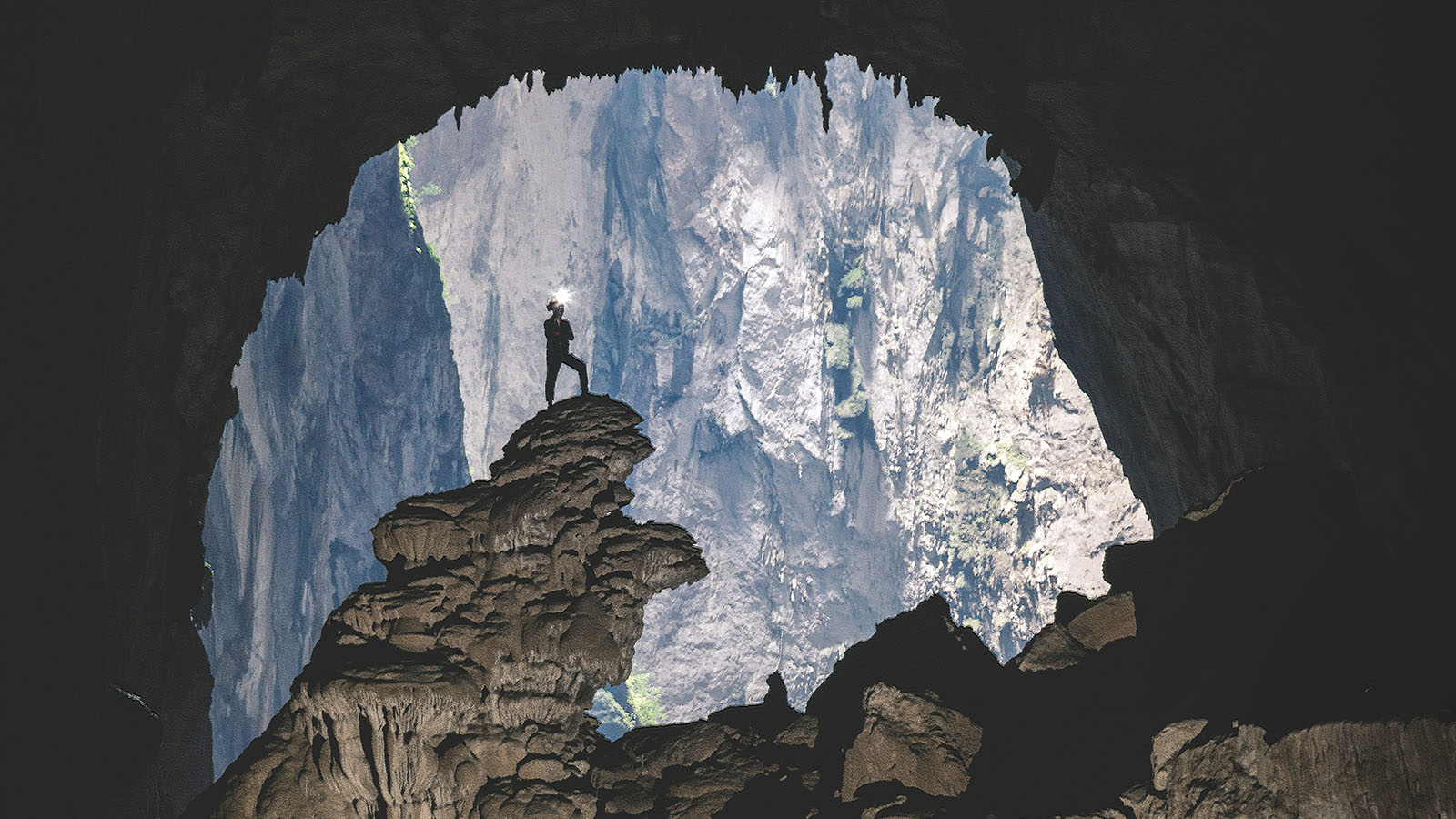





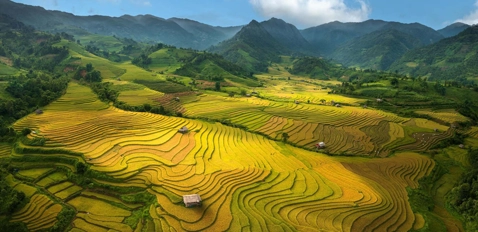






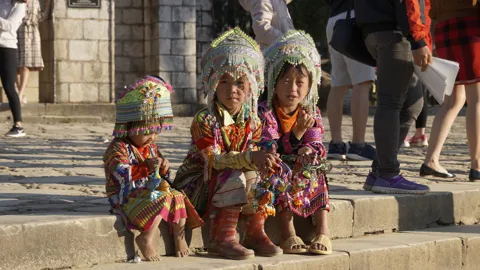

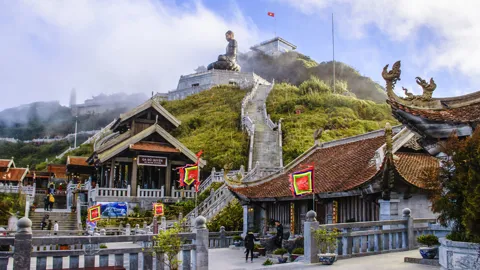

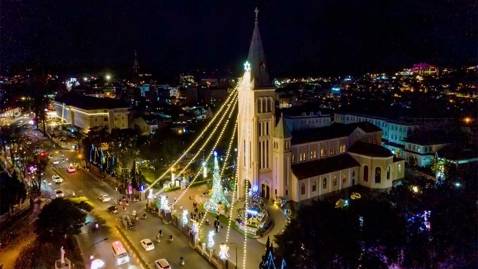
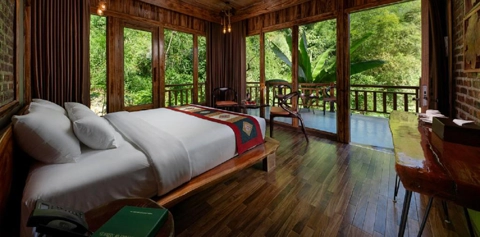
















Comment